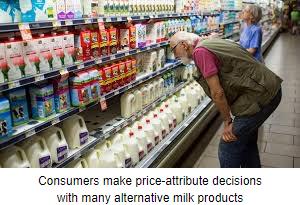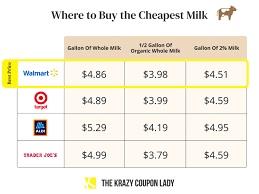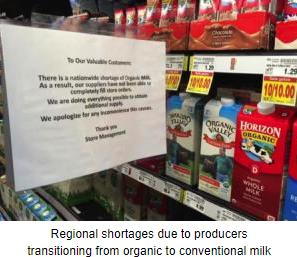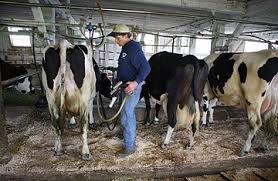
A letter signed by 25 organizations and individual producers of organic milk have addressed a letter to the USDA requesting disbursement of the remainder of a $104 million allocation to producers. The letter also requested additional aid funding to reflect the difference in cost of production between organic and conventional milk. The organic milk producers also requested the USDA to apply the resources of the Economic Research Service and the National Agriculture Statistic Service to obtain and circulate data relating to the relative costs of producing organic and conventional milk.

The producers highlighted the additional costs associated with production of organic milk arising from expenditure on organic feed. Separation of organic and conventional milk creates logistic problems and additional expense for handling and transport. From the submission, it is evident that organic milk production is relatively inefficient with 89 cows on average for an organic dairy farm compared with 337 producing conventional milk. Since there are a limited number of plants certified to process milk under the USDA organic program, transport of raw organic milk is more expensive than conventional milk.
The acknowledged plight of organic milk producers relates to inherent deficiencies associated with scale of operation and the high cost of feed. The problem facing organic producers is that they are unable to pass on to consumers ever increasing costs accruing over and above conventional milk. Only the affluent and “worried well” are willing to pay a realistic price for USDA organic certified milk since consumers balance price against attributes. At different price points, consumers will decide, based on their needs and their resources, whether to pay extra for the perceived benefits of organic over conventional milk. A further complication impacting organic milk producers is the availability of non-dairy conventional and organic alternatives based on plant sources that are far less expensive to produce even using GM-free ingredients. In reviewing prices at an upmarket store in Durham, NC. organic milk was priced at $6 to $7 per 1/2 gallon compared to conventional at $2 to $4 depending on brand. Synthetic soy and other variations were offered at $4 to $5 per 1/2 gallon

The question arises as to whether public funds should be allocated to a sub-segment of an already highly subsidized agricultural industry that would otherwise be nonviable. There is no federal program to support organic egg production despite the obviously higher cost associated with sourcing non-GM ingredients and complying with the burdensome housing and operational rules developed by the Organic Standards Board and administered by the USDA-AMS. In the U.S. certified organic eggs must compete with conventional generic and enriched shell eggs on the basis of shelf price. The market for USDA certified shell eggs is at equilibrium with demand as demonstrated by the relatively static number of hens producing under the program. It is also recognized that a variable proportion of organic eggs is diverted to the cage-free market stream, given that demand is on occasions lower than available supply.
 At the end of the day, there is no nutritional difference between certified organic and conventional milk in terms of composition and quality. If consumers wish to pay more for milk produced and marketed under the organic seal, that is their decision. In a free market, the USDA should not be placing their thumb on the scale and subsidizing producers who wish to make available a product in excess of demand. EGG-NEWS strongly opposes unfair competition and the use of public funds to support the production of a commodity that has no quantifiable benefits. If without support, organic milk cannot provide producers with either positive cash flow or an acceptable return to labor or on assets invested then supply and demand considerations should determine the viability of production of the category. this is in fact occurring as organic milk producers are transitioning to conventional milk.
At the end of the day, there is no nutritional difference between certified organic and conventional milk in terms of composition and quality. If consumers wish to pay more for milk produced and marketed under the organic seal, that is their decision. In a free market, the USDA should not be placing their thumb on the scale and subsidizing producers who wish to make available a product in excess of demand. EGG-NEWS strongly opposes unfair competition and the use of public funds to support the production of a commodity that has no quantifiable benefits. If without support, organic milk cannot provide producers with either positive cash flow or an acceptable return to labor or on assets invested then supply and demand considerations should determine the viability of production of the category. this is in fact occurring as organic milk producers are transitioning to conventional milk.